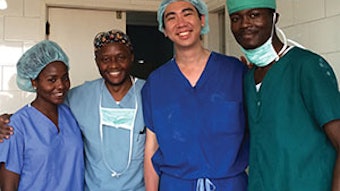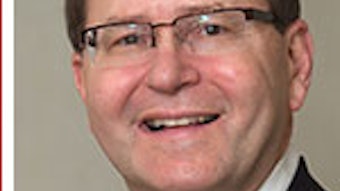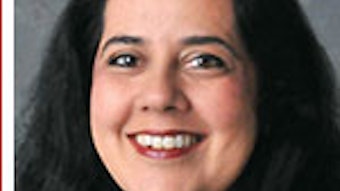Development of a professional code of conduct in an academic otolaryngology departmentExpanded from the print edition
Otolaryngology departments are increasingly becoming aware of the critical importance of professionalism in the academic medical setting.1 Growing evidence is showing that lack of civility in the workplace harms patient safety, employee satisfaction, and the broader institutional mission. Literature from other medical departments and from fields outside medicine suggests that a formalized written code of conduct is an effective method of clearly codifying the culture for all members of the organization, and of improving professional behavior.2
By Yuri Agrawal MD, Nishant Agrawal MD, David W. Eisele MD, Howard W. Francis MD, Department of Otolaryngology-Head and Neck Surgery, The Johns Hopkins University School of Medicine, Baltimore, MD
Otolaryngology departments are increasingly becoming aware of the critical importance of professionalism in the academic medical setting.1 Growing evidence is showing that lack of civility in the workplace harms patient safety, employee satisfaction, and the broader institutional mission. Literature from other medical departments and from fields outside medicine suggests that a formalized written code of conduct is an effective method of clearly codifying the culture for all members of the organization, and of improving professional behavior.2
In this brief commentary, we present a qualitative account of the development of a code of conduct within an academic otolaryngology department. We describe the process by which the items in the code of conduct were determined, as well as the way in which the code was ratified by departmental faculty and ultimately implemented. Our goal is to provide a code that can be adopted and locally adapted by otolaryngology departments throughout the country, toward the common academic missions of excellence in patient care and education.
Development of a code of conduct
Johns Hopkins department of otolaryngology-head and neck surgery code of conduct
Behaviors that create a civil work environment and enable the best patient care.
Professionalism
• Be respectful, civil, and cooperative with colleagues and co-workers
• Recognize that every member of the team makes important contributions
• Ensure that all team members understand overall team goals and their roles
• Ensure safe and thorough transfer of patient care to covering faculty
• Practice peer and patient confidentiality
• Avoid favoritism and side-stepping of rules
• Arrive on time
• Follow dress code
Communication
• Practice frequent, respectful, and clear communication
• Recognize importance of language, non-verbal behavior, gestures, and attitudes in communicating respect for dignity of others
• Refrain from use of abusive language, threats of violence, retribution, or intimidation
• Refrain from gossip or derogatory discourse
• Refrain from making inappropriate remarks about quality of care in public—address colleagues directly in private setting or in privileged and confidential conferences
• Provide prompt, direct, constructive feedback in objective terms in a private setting when concerns or disagreements arise
• Take any concern (real, perceived, big, or small) seriously and try to understand and resolve—ask for help from department leadership if the concern is beyond your ability or scope of authority
Patient care
• Acknowledge patients and family with eye contact
• Introduce yourself (name and role) to patient and/or family member(s)
• Explain to patients and family the plan of care and next steps
• Support your colleagues/team in front of patients and family
The professionalism committee considered sources both internal and external to the department to develop items for the code of conduct. The committee functions as an ombudsperson, and in that role hears about conflicts that arise between members of the department. The committee decided to address common sources of conflict in the code, enumerated in the sidebar. The committee also sought the input of the patient satisfaction officer in the department to learn about common reasons for patient complaints. The most common reasons were also addressed in the code.
The committee considered three sources external to the department to provide exemplar codes of conduct. First, the emergency department at our institution recently underwent an overhaul of its professionalism practices in response to conflicts in the department. They developed a code of conduct as part of their efforts, and we adapted elements of their code to ours. Second, we considered the Vanderbilt University Professionalism Credo developed by Gerald B. Hickson, MD.3 Finally, we considered the 10 rules for a civil workplace developed by P.M. Forni, author of Choosing Civility.4 We have obtained approval from our Institutional Review Board to conduct professionalism-related quality improvement work in our department.
Ratification and implementation of the code of conduct
A draft code of conduct was developed and circulated to all faculty members. Faculty members had a four-week comment period to weigh in on the proposed code, and suggested changes were discussed by the committee and incorporated if agreed upon by committee members. The code was then finalized and read aloud at the next faculty meeting.
Results
The finalized code of conduct we implemented is presented in this issue. We divided the items into three domains: professionalism, communication, and patient care. The primary items selected based on the committee’s experience as the departmental ombudsperson related to inadequate sign-out between providers leading to patient safety risks, and derogatory gossip in the department. The main items selected based on feedback from the patient safety officer related to the need to introduce oneself and the team (e.g., trainees) to patients and family members, and inadequate explanation of the plan of care to patients and families. The department director has championed the code, and emphasized that participation in this code is critical to one’s role as faculty. At this time, the code is appended to all faculty employment contracts, and must be signed at each renewal of the faculty contract.
In this study, we describe our efforts to develop a code of conduct by leveraging existing resources and also incorporating locally relevant issues and experience. Ongoing issues relate to the enforceability of this code of conduct. At this time the department director and professionalism committee feel that the code represents commonsense behaviors that are reasonable to expect and enforce. Further work will be needed to determine whether the code results in an improvement in the culture of professionalism in the department.
References
- Schulz K, Puscas L, Tucci D, et al. Surgical training and education in promoting professionalism: a comparative assessment of virtue-based leadership development in otolaryngology-head and neck surgery residents. Med Educ Online. 2013;18.
- Leape LL, Shore MF, Dienstag JL, et al. Perspective: a culture of respect, part 2: creating a culture of respect. Acad Med. 2012;87(7):853-858.
- Hickson GB, Pichert JW, Webb LE, Gabbe SG. A complementary approach to promoting professionalism: identifying, measuring, and addressing unprofessional behaviors. Acad Med. 2007;82(11):1040-1048.
- Forni PM. Choosing civility: The twenty-five rules of considerate conduct: Macmillan; 2002.







